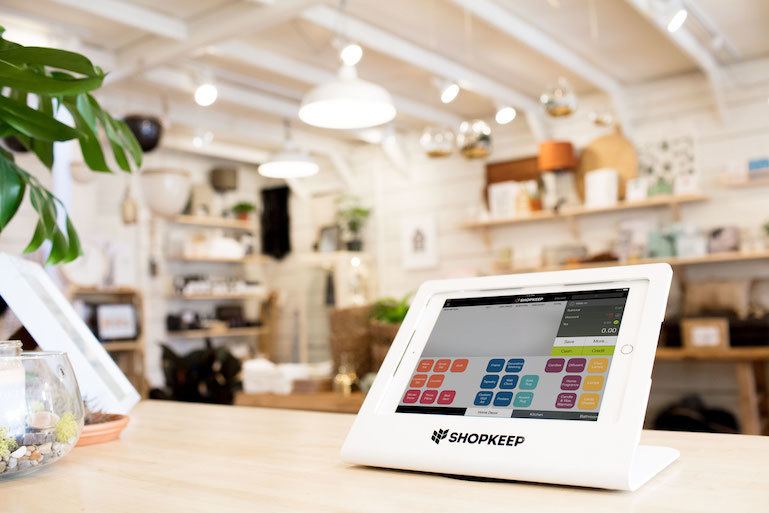
Lean and Mean: How to Improve Retail Operations
Congratulations! You’ve successfully started a retail business. Now the focus moves to sustainability and profitability.
So, how do you achieve those goals? A good place to start is by examining and improving your current retail operations.
Retail operations is a broad term that encompasses all activities related to keeping your retail store running and functioning properly. Since that’s a lot of ground to cover, we’re going to focus on process improvements and optimizations that can make and deliver the biggest cost and time savings as well as revenue increases. We’ll touch on strategies for helping you streamline processes, acquire and retain customers more cost-effectively, and how to make better use of your data to run a lean and efficient store.
Start By Measuring
Before you apply any of the strategies in this article, you need to establish clear baselines for your most important business KPIs (key performance indicators). The easiest and most accurate way to do this is with the reporting and analytics tools included with your point of sale (POS) system. If you don’t have a POS system or retail store management system in place, then you’ll need to gather this data manually.
To help you get started, here are some of the main data points you’ll want to track:
- Total sales
- Sales by store (if you run a multi-store business)
- Best selling items
- Worst selling items
- Average sales per employee
- Conversion rate
- COGS (cost of goods sold)
- Inventory turnover rate
It’s important to gather this data before you start changing anything about your operations. Doing so gives you an accurate starting point to compare any changes you make.
Focus on the Shopping Experience
In the age of Amazon, it’s become harder for small retailers to compete on price. Instead of getting discouraged, get creative. What can you do to compete? What can you offer that Amazon cannot? Our advice: rather than focusing on price points and margins, create an amazing in-store shopping experience.
There are two main areas of your retail operations that a top-tier customer experience can influence and improve: brand loyalty and customer acquisition.
It’s an often touted business saying, but it really is cheaper to keep an existing customer than it is to acquire a new one. How much cheaper you ask? According to the Harvard Business Review, it’s anywhere from five to 25 times more expensive to acquire a new customer than it is to retain an existing one. By prioritizing a welcoming and memorable customer experience, you make it more likely that a customer will keep coming back to your store and making purchases – helping your bottom line.
By focusing on creating more repeat customers, you will also increase your average customer lifetime value (LTV). Let’s do some simplified math to see what that could mean for you.
Say you spend $100 on Facebook advertising in an attempt to acquire some new customers. Your campaign was a success and one of those newly acquired customers continues to shop at your store for the next three years, buying $1,000 worth of products from you. That means their LTV is $900. You spent $100 to earn $900. Compare that to a customer that cost $100 to acquire, but makes a one-time purchase of $150. Their LTV is only $50. That’s the power of an exceptional customer experience.
In addition to increasing LTV, improving the shopping experience can also help you reduce your customer acquisition cost (CAC). If you’re not familiar with the term, CAC is a metric used to quantify the expenses related to acquiring a new customer. As a starting point, we recommend that first-time business owners calculate CAC in a simple manner. Just account for the marketing expenses needed to acquire your customers. In our example above, this would be the $100 in Facebook advertising.
As your marketing becomes more sophisticated, and your business acumen increases, you can use more sophisticated methods to calculate your CAC. This might mean including employee wages, the cost of any marketing technology you use, and expenses related to any product promotions that are a part of a particular campaign. This is a more thorough approach, but it also gives you a more accurate understanding of your CAC.
A strong shopping experience can help you lower your overall CAC because research has proven that it is far cheaper to retain an existing customer than it is to acquire a new one. Additionally, you can begin to leverage word of mouth marketing so that acquiring one customer actually allows you to acquire many. Here’s an example to help you understand this concept.
Let’s say the only way you bring customers to your store is through paid marketing. Some channels you might use include Facebook Ads, search engine ads, and ads in the local paper. As a result of your paid marketing, you might be spending on average $300 to earn a new customer. This is fine if you know that each customer will spend more than $300 at your store.
Now, if you have the kind of customer experience that shoppers can’t help but rave about, the power of word of mouth marketing can reduce this cost. For the sake of simple math, let’s say that every customer you acquire with paid marketing tells three additional people about your store, one of which becomes a customer. This means that for every $300, you’re now acquiring two customers instead of one, effectively reducing your CAC to $150.
So how do you go about improving the customer experience? Here are a few quick ideas to get you started:
-
- Offer a loyalty program that encourages and rewards repeat purchases
- Offer amenities like snacks, drinks, free WiFi and comfortable seating
- Provide customer service training to your team
- Staff your store with managers and other employees that are motivated to perform at a high level
- Offer complimentary services based on the products you sell like styling services or crafting classes
SEE ALSO: How to Increase Sales in Retail — the Ultimate Guide
Improve Your Conversion Rate
Another key to helping you improve your operations is focusing on the metrics and key performance indicators that deliver the biggest impact. By their nature, improving these metrics will deliver the most return on your investment. For brick-and-mortar retailers, conversion rate is a great key performance indicator to optimize. The conversion rate is the percentage of visitors to your store within a given time frame that makes a purchase. Therefore, if you have 200 visitors to your store today, and 10 of them buy something from you, your conversion rate for this day is 5 percent.
Here’s a quick formula for calculating your conversion rate:
Conversion Rate = (number of shoppers that make a purchase/total number of shoppers) * 100
This metric is important to operational efficiency because it is an expression of your ability to attract the right shoppers to your store and to sell to them effectively. If you’re attracting the wrong shoppers, then you’re spending your marketing dollars inefficiently. If you can’t sell them on the value of your products or services, then you’re essentially wasting good potential customers on poor sales technique.
To improve this metric you can either target different types of people with your marketing or improve your sales team’s ability to convert more shoppers into buyers. We discussed marketing a bit earlier so now we’re going to focus on improving your sales team’s selling ability.
One of the best ways to make these improvements is to implement sales training. This could be a formal training program from an outside organization or it could be something more informal that you design yourself. There are some clear pros and cons to each option, so let’s take a closer look.
Formal Sales Training
Formal sales training involves hiring a training firm or a consultant to visit your store and provide sales training to your team. If you choose the in-person route, you could host a private training session just for your team, or have everyone attend a publicly accessible event. Lastly, there are also courses, many of them online, that you can buy as an alternative to a live session.The benefit to choosing this method is the quality of the training your team will receive. There are dozens, if not hundreds, of reputable firms and consultants you can hire or professional courses you can buy. If you’re not an experienced salesperson, this is a great way to get your team the info they need to be better sellers. Just be sure to talk to businesses that have previously used the training to get a feel for the performance bump it might give you.
However, the costs associated with formal sales training can put it outside the reach of many small businesses. According to Forbes, a public sales training event can run between $500 to $5,000 per attendee and a private event can run between $3,500 to $25,000 per attendee. Depending on the location of the event, you may also need to factor in the cost of travel, hotel rooms, and food for your team. Because of these costs, some retailers elect to only send managers to these events. The managers then return and pass on the training information to junior employees.
Informal Sales Training
Informal sales training can be an effective way to train your employees without breaking the bank. Instead of hiring an expert to instruct your sales team or sending them to a training event, you can create the training yourself.You can reference articles, videos, and other sources to create the course materials and then instruct your team the way you want. Normally, this would be a series of classroom type lectures that involve roleplaying so the team is better equipped to apply the training to real-life situations.
While this method can be effective, there are some negatives. Depending on the extent and details of your course, it can be extremely time-consuming to put together all of the information you need. There’s also something of an art to teaching a skill so that people understand it and can effectively apply it. Lastly, depending on your sales experience, your training may not be as thorough or effective as training provided by an expert. If this is the case, we recommend investigating the formal training options we listed above.
Automate as Much as Possible
There’s no shortage of tedious and time-consuming work when you’re running a small business on your own or with a small team. Whether it’s keeping track of expenses or managing employee hours by hand, these tasks keep you away from higher impact areas of your business.
In order to solve this problem, and see a productivity improvement, smart retailers find a way to automate these tasks. The most effective way to do that is by adopting software that can help you complete these tasks faster and with less effort. For example, you could offload your manual bookkeeping to an accounting platform like QuickBooks, or use POS software to track your employees’ hours.
The specific software tools and versions you choose will be unique to your business needs and budget. However, there are three pieces of advice we can give you that will be true no matter what your situation:
- Automate more than one task. In fact, automate as much as possible so you can focus on growing your business, not just running it.
- Work with trusted brands that have a proven track record of success.
- Try to choose tools that integrate and work together. This allows you to enhance their functionality by sharing data between them. For example, if your accounting platform and POS integrate, your accounting will be more accurate and you’ll be able to complete day-to-day accounting tasks more quickly than if you used each system separately.
Optimize Inventory Management
Inventory is the heartbeat of your retail business. It touches almost every aspect of your operations, and as a result, it’s ripe for optimization. Because inventory management is such a huge topic, we’re going to give you a few examples of aspects you can improve to get you started.
Choose the Right Tools
If your inventory seems more like a black hole than the source of all your revenue, consider implementing a retail management system (RMS) or a POS system. These tools will give you insight into key areas of your inventory like sales performance, costs, gross margins, and more. Plus they will help you perform critical management tasks like inventory adjustments, checking stock levels, and setting reorder triggers so you never run out of your hottest selling items.The data-driven insight and overall ease of use that these tools bring to something as complex as inventory management can deliver huge operational efficiencies for retailers.
Make Data-Driven Decisions
With the right tools in place, you’ll no longer be flying blind and can begin managing inventory from a data-driven approach. Since every business is different, we’ll give you some general ideas for insights these tools deliver and decisions they can help you make:- Ensure you always have your best selling items in stock
- Eliminate or reduce the amount of your lowest selling items by putting a promotional process in place
- Identify your highest margin items and put plans in place to sell more of them
- Uncover inventory shrinkage issues so you can put a stop to them
- Identify your lowest margin items, and put a process in place to package them with higher margin items

Implement a POS System
As we’ve hinted at throughout this post, adding a POS system — particularly a modern, tablet-based POS — can help retailers of all sizes achieve tremendous operational efficiencies. In addition to the areas we mentioned throughout the post, here are a few more ways that a POS system can help you improve your retail operations.
Lower IT Costs
Unlike legacy POS systems, tablet POS systems run on commodity hardware like iPads and Android tablets. Not only does this reduce the initial purchase cost, but it also lowers any support or repair costs because you aren’t forced to replace expensive proprietary hardware.Faster Checkouts and Staff Training
Unlike traditional cash registers or legacy POS systems, modern tablet POS systems feature a user-friendly interface that makes it easy for employees to operate and learn. This reduces the time (and labor cost) that it takes an employee to get up to speed, thus allowing them to quickly become a contributing team member far sooner than they could otherwise.An easier operation at checkout will also improve checkout speed. Nobody likes to wait in line so decreasing the amount of time customers spend in it will make customers happier. And happier customers are more likely to make repeat purchases. In fact, research from Zendesk found that 50% of consumers have made more purchases from a company after having a good customer service experience. The same study also found that 87 percent of customers share good experiences with others, proving the point that making your customers happier can help you grow revenue and the size of your customer base at the same time.
Robust Analytics and Reporting
One of the biggest benefits a POS can deliver is advanced analytics and reporting. These tools give you data about many of the most important aspects of your retail operation. Whether it’s understanding what products sell the best, figuring out the busiest times of day, and even estimating sales tax owed for your quarterly filings, these systems help you decide and act with confidence.Streamlined Marketing
For many small retailers, email is the go-to marketing channel. However, building an email list can take some time. A POS can help speed up the process by allowing you to collect customer email addresses and other contact information right at the point of purchase. Once you collect a customer’s email address, you have three big marketing opportunities available to you:- Instead of printing a receipt after a purchase, the customer can choose to have it emailed to them. Many POS systems allow you to customize this email receipt so that it includes links to your social media profiles and/or website, giving customers additional ways to engage with your brand.
- You can send these customers your weekly or monthly newsletter, which might include information about your latest and greatest products, as well as news about upcoming sales.
- Lastly, you can send these customers standalone promotional emails that might focus on a particularly large sale you’re running, maybe for back to school season or around the holidays.
Integrations With Key Business Tools
Most POS systems integrate with other key business tools like software for accounting, ecommerce, and email marketing platforms. This allows you to share data from your POS to these other solutions so you can automate tedious tasks and run a more efficient business For example, doesn’t it eliminate a ton of headaches knowing that your daily sales data is going to be automatically sent to QuickBooks at the close of business?The Bottom Line
Running a retail business, especially if you’re a first-time business owner, is a continual learning experience. To succeed, you need to pair in-demand products with a great experience, while continually reviewing and optimizing your operational processes. We’ve given you ideas to get you started. Now it’s up to you to apply them to your own business and watch the returns start rolling in.
Want to try ShopKeep for yourself?
Just answer a few easy questions.
Need help finding the right point of sale?
Just complete the form. We’ll call you right back to explain how ShopKeep can work for you.
Hit the ground running.Sprinting, in fact!
Read our free, comprehensive guide, Small Business 101, to learn all you need to know about starting a thriving business.

